An academic analysis of 12 roadmaps for decarbonising the global aviation industry finds they place a heavy reliance on biogenic fuels in the medium-term and synthetic e-kerosene in the longer term but largely omit a number of fundamental problems with sustainable aviation fuels, says a new science-led paper. Realising these roadmaps could require 9% of global renewable electricity and 30% of sustainably available biomass by 2050, with significant energy losses as SAF production is energy intensive and comes with a risk of clean energy displacement. Additional effects omitted in most roadmaps relate to the decadal time lags in re-sequestering biocarbon in the case of forest biomass and the impact of non-CO2 emissions. With competition over land and scarce clean energy, along with the high economic and political investments required, there is a question as to whether the use of SAF is a worthwhile climate action, say the authors.
The challenge for aviation is to abate CO2 emissions that in 2019 totalled around 1 billion tonnes (Gt), while at the same time aiming to grow a sector against an agreed target of net zero emissions by 2050. The total climate impact of air travel is also larger than CO2 alone due to other emissions, in particular nitrogen oxides, water vapour and soot.
To date, the industry’s climate mitigation strategy has involved market-based mechanisms such as emissions trading and carbon offsetting, although offsetting does not represent absolute emissions reductions. Step-change technologies such as hydrogen-powered planes and battery-powered short-haul flights will lead to GHG reductions but at a small scale given the limited contribution of short flights to overall emissions. This reality means that fuel cells and battery technologies play no role in aviation decarbonisation roadmaps up to 2050 for long-haul flights, where 5% of flights over 4,000 km make up 40% of fuel use.
The long-haul network will only survive in its current form with liquid hydrocarbon fuels, says the paper, which focuses on the SAF pathways related to biomass, waste and power-to-liquid (PtL) e-kerosene, plus their resource requirements.
“A key challenge is to replicate the long-term natural geological processes that produce fossil hydrocarbons,” it says. “Non-fossil primary energy requires significant processing to be turned into ‘final energy’ of SAF that delivers the ‘useful energy’ for flying. With energy becoming increasingly valuable due to universally declining ratios of ‘energy return to energy invested’, it is necessary to be strategic regarding where to invest primary energy. At each stage of the SAF production process, energy is ‘lost’ as waste heat (second law of thermodynamics).”
The real-world availability of clean primary energy at present and for the foreseeable future is limited, argues the paper. “In terms of achieving global decarbonisation, clean energy, just like land, represents a scarce resource. SAF is only one amongst many potential uses.”
The biomass and clean energy requirements of SAF production therefore necessitate a perspective on the availability of these resources beyond aviation. The 2019 global primary energy supply of 612 Exajoules (EJ) was dominated by fossil fuels (84.3%) and delivered final energy of 435 EJ, the difference being losses from the conversion. That same year, the total supply of renewable plus nuclear electricity was 36 EJ, meaning substantial investment is required to grow the clean electricity sector by 2050. Estimates for electricity generation in 2050 range from 224 EJ from renewable sources plus 20 EJ from nuclear.
The aviation final energy demand in 2050 in the roadmaps varies between 15 EJ and up to 30 EJ, although greater amounts of primary energy are required to produce this final energy, with one roadmap calculating that 16 EJ required by aviation in 2050 will demand 28 EJ primary energy. “To synthesise the assumptions in the roadmaps, it appears that broadly, aviation could require 20 EJ of electricity and 15 MJ from biomass,” says the paper. “These would represent 9% of 224 EJ global renewable electricity and 30% of available 50 EJ biomass.
“Clearly, food, municipal and industrial waste volumes will only deliver a fraction (5 EJ in total) of energy, meaning that energy crops (5-10 EJ) and agricultural (10-12 EJ) and forest residues (10-20 EJ) become crucial. The land use implications are substantial.”
Hypothetically, to produce 15 EJ – the total biomass requirements for aviation – from sugar cane would require 125 million hectares of land, larger than the land area of South Africa. For comparison, renewable electricity installations deliver 470-1070 gigajoules (GJ) per hectare and year.
Hydrogen is required for some biogenic SAF processes as well as for PtL, although estimates of how much hydrogen will be available in 2050 were found by the study to vary. In addition, for PtL it is necessary to capture CO2.
All inputs bring a risk of displacement. FOGs (fats, oils and greases) are already a valuable commodity and diverting feedstock to SAF could lead to replacement by palm oil, vegetable oil or even fossil fuels. E-kerosene can lead to displacement when electricity used in the process is not additional to existing efforts of decarbonising the energy sector.
Examining the carbon benefits of using bioenergy requires an understanding of the global carbon cycle, including carbon stocks and flows, and consideration of the size, longevity and stability of the stock. From an ecological perspective, for example, “there is no such thing as ‘residue’ biomass in a forest ecosystem as all biomass, living or dead, is part of the total ecosystem carbon stock,” says the paper. The assumption made in aviation roadmaps that all biomass is carbon neutral is therefore invalid, it adds. As well, the assumption that SAF emissions will be 80% lower than fossil jet fuel rests on a small number of feedstocks, which have not yet been deployed industrially or are limited in volume.
The paper notes that although with high uncertainties, all forms of SAF contribute to non-CO2 warming, increasing the overall climate impact of aviation relative to other sectors.
“Against this precarious backdrop and given the physical constraints on land and clean energy, the amount of SAF required to support aviation growth lacks critical and systemic assessment of feedstocks. Airlines have adopted a strategy that is dependent upon rapid and sustainable expansion of SAF because it is the only technical solution to maintaining long-haul flights,” say the authors.
“Whilst technologically feasible, as evidenced in a small number of plants, the production of SAF at scale and the simultaneous minimisation of unintended consequences have yet to be demonstrated. A major constraint is that it is not only aviation but the whole energy system – still largely dependent on fossil fuel – that needs to decarbonise within the next decade or two.”
To reach net zero, roadmaps invoke carbon capture and storage (CCS) technologies, for example bioenergy with carbon capture and storage (BECCS), to remove ongoing residual emissions once all feasible decarbonisations strategies have been deployed but this is high risk, thermodynamically costly and societally untested, warns the paper.
“Clearly, land dedicated to long-lived eco-system carbon sinks is a superior mitigation strategy compared to its use for bioenergy and should be prioritised where possible,” it says. “So the message that ‘net zero is not enough for 1.5C’ is a critical one in the SAF debate. SAF production competes for land area dedicated to nature-based removal, but it also competes – in the case of e-kerosene – with all forms of carbon capture and storage. Both biogenic and PtL derived SAF are designed with the purpose of combustion, thereby releasing GHGs into the atmosphere.
“The implications of SAF usage as a counterfactual to decarbonisation and permanent carbon removal is widely ignored and rarely acknowledged in aviation roadmaps.”
The authors add: “Clearly the societal goal is not to achieve net zero of one single sector but to maximise our chances of averting catastrophic climate impacts. If decarbonising one sector undermines the opportunity of transitioning other parts of the global socio-economic system, then questions need to be asked as to how the allocation of scarce resources should be prioritised. Understanding the consequences of one sector’s climate action on the ability to achieve collective mitigation goals is crucial.
“Given the economic and political investments required, the question is whether SAF really reduces atmospheric concentrations of CO2 compared with a business-as-usual case of fossil fuel usage. In other words, is it a worthwhile climate action?
“This paper provides insights into some of the trade-offs and risks, including competition over land and scarce clean energy, and the answer will differ for different countries.”
The authors of the paper, ‘Implications of preferential access to land and clean energy for Sustainable Aviation Fuels’, are:
Susanne Becken, Professor of Sustainable Tourism, Griffith Institute for Tourism, Griffith University, Australia. She is a member of the Air New Zealand Sustainability Advisory Panel and member of the Independent Advisory Group of Travalyst.
Brendan Mackey, Director, Griffith Climate Action Beacon, Griffith University.
David S. Lee, Professor of atmospheric science, Aviation and Climate Research Group Leader, Manchester Metropolitan University, UK. He is a member of the UK Jet Zero Council, a co-rapporteur of ICAO’s Impacts and Science Group, and a member of the UK CAA’s Environmental Sustainability Panel.


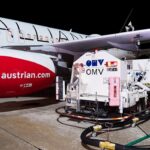
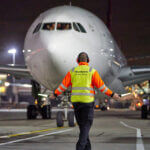
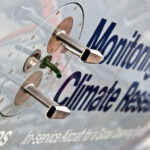



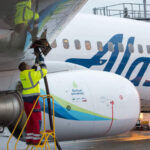
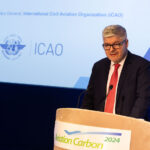
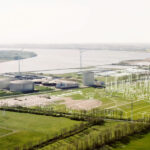
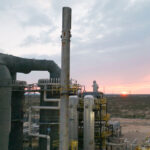

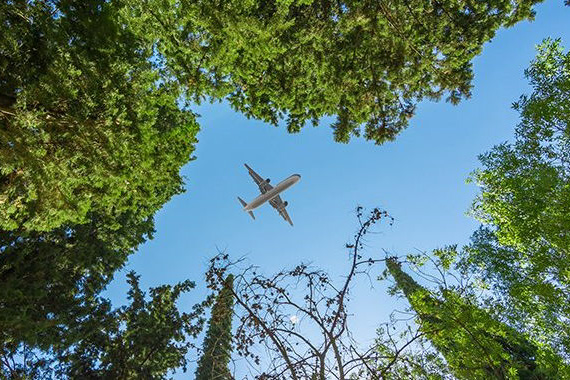


More News & Features
Progress on decarbonising the airline sector has been slow this year, says IATA chief
EASA releases status report on Europe’s SAF production and readiness to meet blending targets
European and US research programmes expand to better understand aviation non-CO2 climate effects
New partnerships formed to drive e-SAF production in Nordic markets
IAG continues to go big on e-SAF as it inks 10-year offtake agreement with Infinium
US on the pathway to achieving its 2030 SAF Grand Challenge target, says DOE report